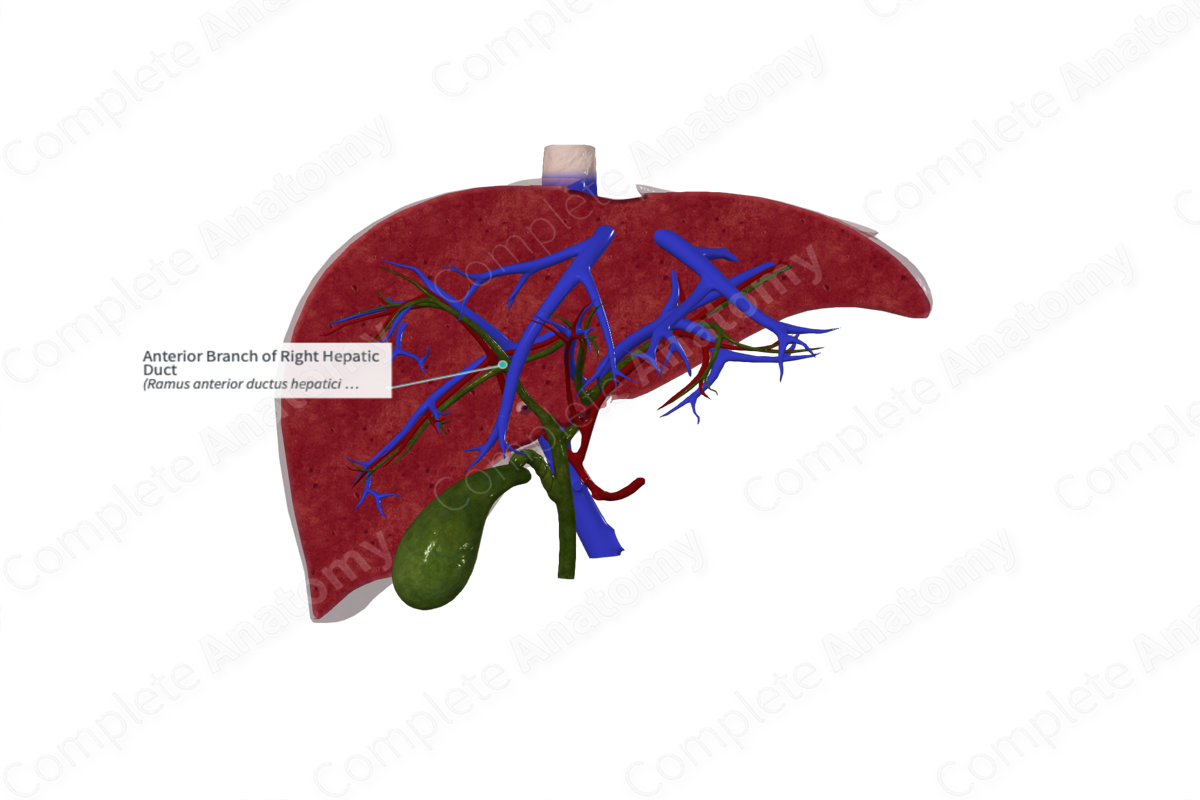
Anterior Branch of Right Hepatic Duct
Ramus anterior ductus hepatici dextri
Read moreStructure/Morphology
The right hepatic duct is formed by the merging of anterior and posterior branches and carries bile from the right liver.
Right segmental ducts that receive bile from segments V and VIII of the liver unite to form the anterior (medial) branch of the right hepatic duct.
Key Features/Anatomical Relations
Once the hepatic branches merge, the right hepatic duct becomes extrahepatic and runs vertically just 1-2 cm on the right side of the porta hepatis. It ends in the porta hepatis where it merges with the left hepatic duct to form the common hepatic duct (Standring, 2016).
Function
The anterior branch of the right hepatic duct transmits bile from segments V and VIII of the right liver to the right hepatic duct and on to the common hepatic duct.
References
Standring, S. (2016) Gray's Anatomy: The Anatomical Basis of Clinical Practice. Gray's Anatomy Series 41 edn.: Elsevier Limited.
Learn more about this topic from other Elsevier products
Common Hepatic Duct

Although the confluence of the hepatic ducts is situated outside of the parenchyma of the liver, for convenience an intrahepatic bile duct is defined as any bile duct proximal to the confluence of the right and left hepatic ducts.



